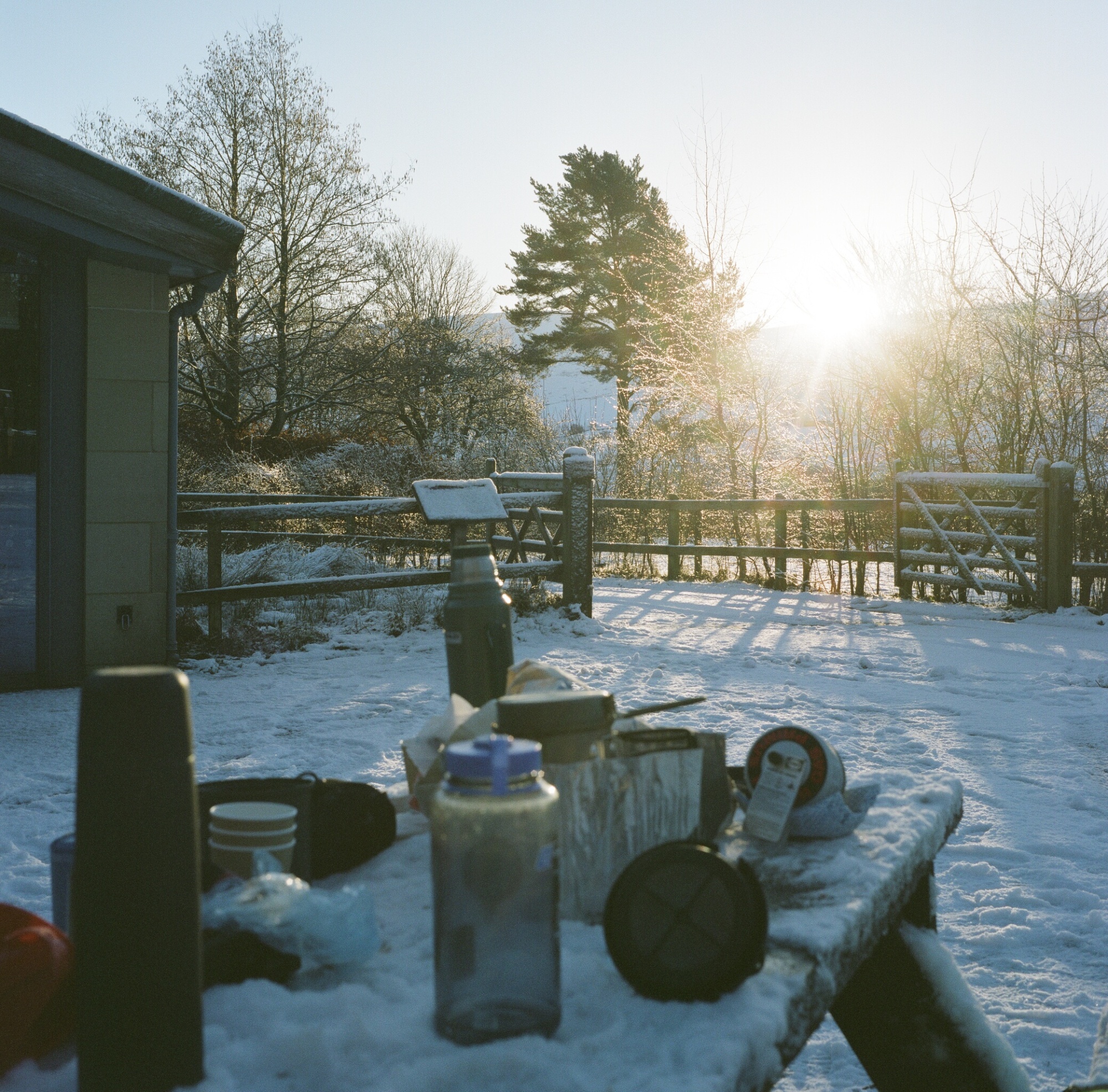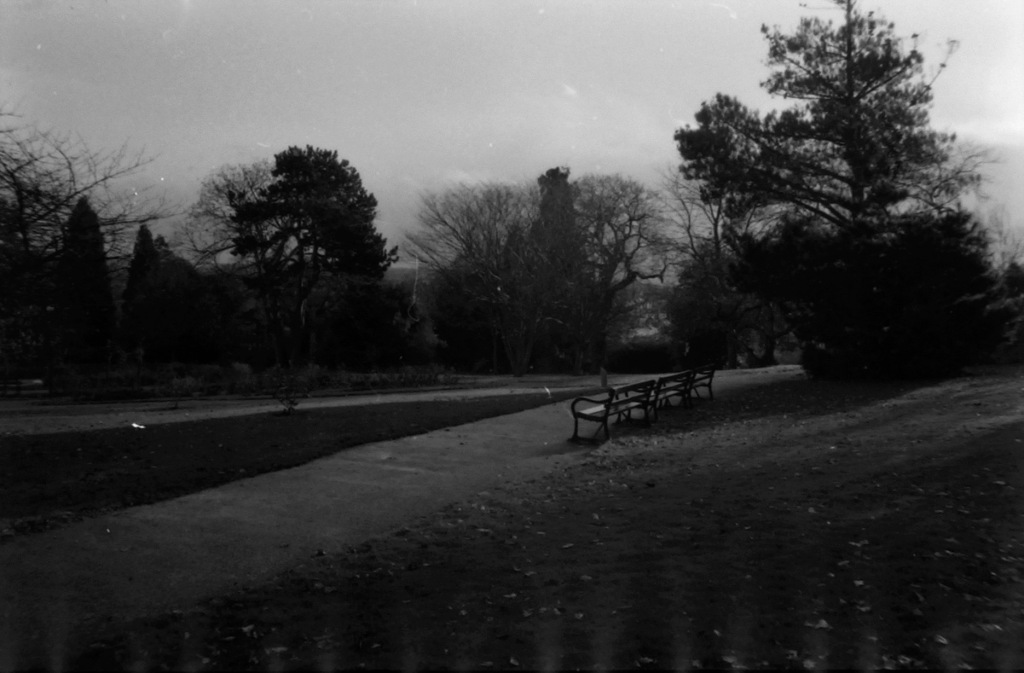Our annual winter hunt took us to the Lake District this month. Taking up position at Rydal Hall, we stayed in one of their ‘Eco Pods’, which equated to a secure, carpeted but cold, wooden hut. But at least we had no need to carry the tent, and we had access to the best shower block in the Lakes!
Our walking route had been planned to take us from Rydal to the summit of Helvellyn, via Fairfield. However, late starts and winter terrain makes for long days; as such we decided to cut things short on the way down to Grisedale Tarn from Fairfield summit, heading instead for Grasmere and the pub. To make up for it, we took to practicing our glissade technique on the way down. Always fun!
I used the Rolleiflex T and a combination of films on this trip, the remnants of a Fujicolour Pro 400H from last months camp in the Peak, though these were shot at 200 and developed normally, for ISO 400. I also shot a full roll of Kodak Ektar, exposed at box speed. Both films were developed professionally by Ag-Photographic.
I use a Gossen Profisix light meter, (known as the Luna-Pro SBC in the ‘States), reknowned for it’s sensitivity in low light conditions, and overall it is a great device. Though it does tend to get a little wacky in the cold, starting off by being unable to settle on a reading, then by complete cessation of action. It’s had me worried a couple of times, but it starts to work normally after it warms up sufficiently.
I took to metering these scenes using the Profisix in conjunction with an 18% grey card, found on the back surface of my analogbook notebook. Camera light meters are designed to normalise light levels to the reflectance of an 18% grey surface, some more information here. With metering being tricky in the snow, I took it on conventional wisdom that I might get better results if I used a grey card to consistently meter reflected light from.
See for yourself, I do really like the balance in some of these images, though I can’t be entirely sure of what has been done during lab processing.
Enjoy. X



